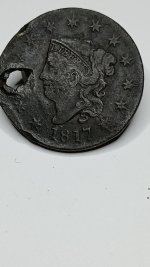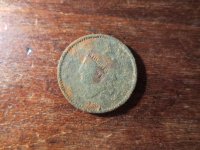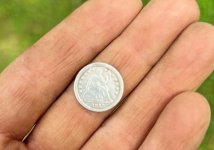Hello again!
As I stated in the previous post I am brand new to detecting. I couldn't resist any longer and last night I spent 3 hours in my backyard testing out my new MD.
My first find was a lid to a chewing tobacco can.
Second find and first coin was a 1997 Dime, third a 1995 quarter.
My final find, which took me about 20 minutes to recover, was a still cylinder shaped can of Storm (soft drink) full of dirt, from about 8 inches down.
So nothing too exciting but I had a blast and learned a lot about my machine.
I did come up with a few questions though;
1) I have read several posts which state something to the fact that different types of soil will produce different depth and detection results, unfortunately they don't specify how. My soil is what a farmer would call "Black Gold", it reminds me of potting soil, a very rich black soft dirt. How does that effect a MD? How do other types of soil affect MD's?
I was hoping that someone could point me in the right direction (website, book, general principle) of how soil type affects MD's.
2) The two coins I found were discolored/corroded to the point they are now a brown color. They are under 15 years old, is that common for clad or is that due to the conditions they are buried in?
Thanks for any info/help/insight you can provide!
Bucket
As I stated in the previous post I am brand new to detecting. I couldn't resist any longer and last night I spent 3 hours in my backyard testing out my new MD.
My first find was a lid to a chewing tobacco can.
Second find and first coin was a 1997 Dime, third a 1995 quarter.
My final find, which took me about 20 minutes to recover, was a still cylinder shaped can of Storm (soft drink) full of dirt, from about 8 inches down.
So nothing too exciting but I had a blast and learned a lot about my machine.
I did come up with a few questions though;
1) I have read several posts which state something to the fact that different types of soil will produce different depth and detection results, unfortunately they don't specify how. My soil is what a farmer would call "Black Gold", it reminds me of potting soil, a very rich black soft dirt. How does that effect a MD? How do other types of soil affect MD's?
I was hoping that someone could point me in the right direction (website, book, general principle) of how soil type affects MD's.
2) The two coins I found were discolored/corroded to the point they are now a brown color. They are under 15 years old, is that common for clad or is that due to the conditions they are buried in?
Thanks for any info/help/insight you can provide!
Bucket





